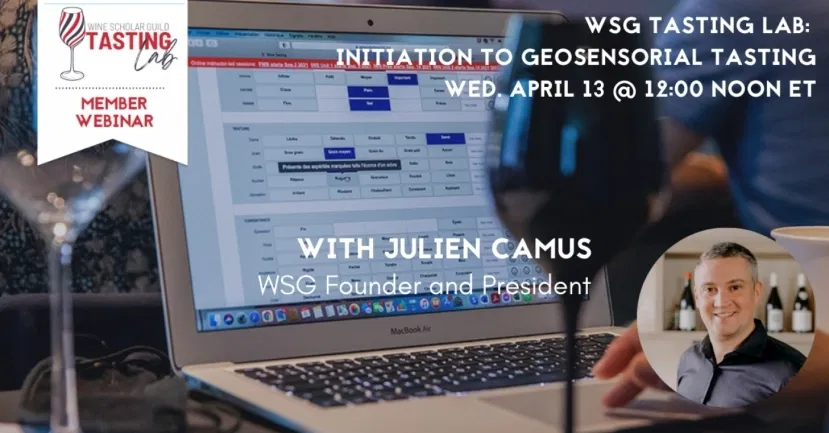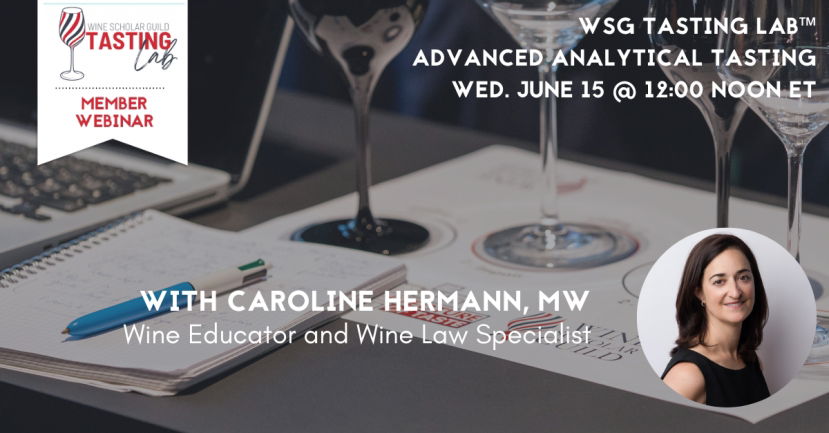BLOG
WSG Tasting Room
We recently caught up with Justin Martindale MW, our Membership & Community Manager, to find out what’s happening in the WSG Membership program and how it all gets put together.
Summary:
This video explores some of the key techniques in tasting red wines, that enable you to make an objective analysis of its quality, and also take the first steps towards identifying the variety and where in the world the wine comes from. This one is designed for those of you who don't have a huge amount of wine tasting experience and want to get to grips with the basics.
Details of all the wines are in the attached pdf.
About the
Summary:
This is a nuts-and-bolts introduction to some basic white wine tasting techniques, aimed at those of you who don't have a huge amount of prior tasting experience. Here we'll discuss some tips for how to get the most out of your white wines, and take the first steps into how you might decipher a grape variety and an objective quality assessment of a wine.
You can find all the details of the wines in the pdf download above.
About the
Summary:
In this video we'll taste 3 different Chardonnays of different styles, quality and origins, and see how we might make some arguments for deciding the variety, where in the world they come from and how good they are using evidence from the glass.
All the details about the wines can be found in the pdf link above.
About the Speaker:
Justin Martindale is the Wine Scholar Guild Membership Manager and one of our in-house Masters of Wine. Justin
Summary:
Regenerative Viticulture is one of the most exciting developments in wine sustainability in a generation. Here we showcase three fantastic French producers who have taken the leap and converted their vineyards to this method of farming.
All the details of the wines are downloadable in the pdf above, along with some links to further information you may enjoy.
About the Speaker:
Justin Martindale is the Wine Scholar Guild Membership Manager
The WSG Tasting Diploma is a bold, multidisciplinary program designed to break free from the technical and soulless tasting methods that are most commonly taught. It's a complete reimagining of how to taste wine.
This revolutionary course will allow students to take their critical tasting skills to the next level and gain deeper understanding of expression of place and terroir in wine. The course delves deeply into neuroscience and a qualitative approach to wine tasting, with an emphasis on texture and mouthfeel. We consider many elements that are neglected in traditional tasting methodologies, such as energy, vitality, salivation and digestibility. In this article, Simon J. Woolf asks what makes the difference between mass produced commodity wine and artisanal wine that reflects its origins.
On April 13, WSG members, alumni and school network had the chance to discover WSG Tasting Lab®. This revolutionary way of tasting wine uses two distinct tasting grids and a lexicon created by WSG and wine industry experts that focus on a wine’s mouthfeel, texture and shape and how these elements might relate to the wines’ terroir signature.
The following two wines were tasted during this exciting webinar:
Domaine Marcel Deiss Grasberg 2016
Domaine Marcel
This wine has high acidity, medium alcohol with medium body, and aromas of lemon, lime, and wet stones. Sound familiar? Wine tasting notes can appear strikingly similar on paper, especially when tasting a suite of comparable wines. But, as a taster, how can you differentiate them? Do we learn anything about their terroirs or production methods from this tasting note?
WSG's Tasting Lab® allows you to take your








